Multimedia Content

Copy of letter from Post Office to Henry Kemp, 20 April 1844, courtesy of Public Record Office Victoria, Victorian Archives Centre.
Details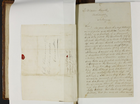
Copy of Warrant served to William Barrett, 17 August 1843, courtesy of Public Record Office Victoria, Victorian Archives Centre.
Details
Drawing of plan for Queens Wharf road, courtesy of Public Record Office Victoria, Victorian Archives Centre.
Details
Joint letter to Public Works Committee from David Byrne, John Brown, et al, 18 June 1844, courtesy of Public Record Office Victoria, Victorian Archives Centre.
Details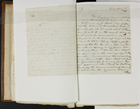
Letter from M Fairfax to Council, 8 April 1843, courtesy of Public Record Office Victoria, Victorian Archives Centre.
Details
Letter to Assessment Committee from J Ballingall, 16 April 1844, courtesy of Public Record Office Victoria, Victorian Archives Centre.
Details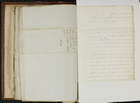
Letter to Assessment Committee from J Taylor, 23 February 1844, courtesy of Public Record Office Victoria, Victorian Archives Centre.
Details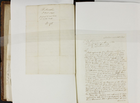
Letter to chairman of assessment committee , 5 October 1843, courtesy of Public Record Office Victoria, Victorian Archives Centre.
Details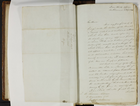
Letter to Chairman of Council from Town Clerk, 15 September 1843, courtesy of Public Record Office Victoria, Victorian Archives Centre.
Details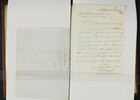
Letter to Chairman of Finance Committee from J Ballingall, 5 March 1844, courtesy of Public Record Office Victoria, Victorian Archives Centre.
Details
Government
Three tiers of government in Australia - municipal, State and federal - guide Melbourne's destiny. The city has always been part of larger political entities with administrative authority divided and shared across the metropolitan region and beyond. Voters elect municipal, State and Commonwealth representatives.
At its foundation, Melbourne was not a centre of government but part of the extended British Colony of New South Wales. For administrative purposes it was included in the Port Phillip District, the capital and seat of government of which was Sydney. Captain William Lonsdale, the first police magistrate appointed in 1836, was responsible for law and order and general community welfare. Lieutenant-Governor Charles La Trobe was appointed in 1839. Government then consisted of a small body of customs and immigration officials, gaolers and militia. After Separation in 1851 a sizeable administration came into being as Melbourne became the capital of the new Colony of Victoria. The colonial government employed officials on the goldfields, expanded the police, built gaols, and set itself up in ambitious style at Parliament House and the Treasury Building at the city's eastern edge. The Legislative Council, consisting of nominee and elected members, first met in 1851.
The population of gold-rush Melbourne was swelled by immigration. The new migrants - 'Not content ... to be squatters or diggers all our days' - agitated for rapid social and economic development and Victoria's 'New Constitution' of 1855 was the result. The head of state was the Queen of England, but with sovereignty deemed to lie with the people, as befitting a representative democracy, and the Governor retaining a role as her colonial representative. The Constitution established the two houses of the Parliament of Victoria. But in the restrictive franchise and entrenched powers of the upper house, the patrician and conservative framers of the Constitution designed a brake to be applied to the aspirations of the more democratically elected Legislative Assembly. Victoria's Constitution was not wholly democratic, as it turned out - women did not get the vote in Victoria until 1908, while Koories and Chinese were for a considerable time excluded in practice if not in actual legislation. Nevertheless, responsible government, as it was termed, gave citizens a powerful instrument to satisfy their aspirations, and following the model of a developed society many of them knew well, they set about creating wharves and docks, roads, bridges, public buildings, public works, telegraphy, water supply, transport facilities and infrastructure generally. State and federal government departments, and associated agencies, have all made substantial material contributions to Central Melbourne and its architecture. The public service was established on open professional lines, with competitive examinations and promotion on merit and seniority, but this system was soon undermined by political patronage. A chief characteristic of government in Victoria in both the 19th and 20th centuries was the extent to which it reflected society's divisions as shaped by wealth, region and class. In creating 'a conservative bastion without parallel in the British Empire' the framers of the Constitution ensured that the Legislative Council would conflict with the Legislative Assembly, in which governments were formed. Until 1950 rural interests made up about half the Council, with this dominance maintained by an extraordinary weighting to rural areas in distribution of seats.
The dramatic early growth and wide functions of central governments have long interested historians - especially in an age when political philosophers have argued strongly for laissez-faire and the 'free' workings of society. Traditionally, this has been interpreted as a response to the challenge of the pastoral frontier. But was there a challenge from the frontier? Most new government installations and public works were centrally located in the metropolis. Ambitious, expanding and centralising central government may have been part of the colonial project from the beginning. Britain was experiencing its own 19th-century 'revolution in government' at this time, and facing challenges in health, education and poverty, variants of which existed in Melbourne. Then there was the question of the cost of services. Attempts had been made to create self-reliant community administrations in the 1840s but these failed. Melburnians were reluctant to accept self-reliance if it meant taxation, but they were quite happy for the central government to expand its services provided it did not cost them anything. It is significant that much early colonial government activity was undertaken with low levels of taxation. An early conception of government likened it to a bank drawing on the revenue obtained from the sale of the Crown lands to develop much-needed services. This was necessary, it was claimed, owing to the limited resources of private capital in the new land. Customs duties were another source of government revenue and steep increases in tariff protection were justified as a boost to manufacturing and the economy. Described as 'colonial socialism' by some, the justification for this expansion of government differed from more doctrinaire interpretations of socialism, whose adherents sought the intervention of the state to remedy social inequalities.
Melbourne benefited greatly from initiatives of the central government and its instrumentalities - at the expense of country and provincial centres, it appeared to some. According to historian Graeme Davison, 'the ultimate effect of government intervention, whether in the country or the city, was to confirm the centralising tendency, first because it augmented the central bureaucracy but more importantly because such facilities as railways, telegraphs and even schools had an implied centralising bias'. Centralisation was accepted initially on the assumption that decentralisation would follow. Public works were undertaken by government departments, or by special-purpose statutory corporations and boards, and given special powers by the parliament. Authorities were created to oversee land selection and sale, the police and fires and firefighting. Extensive commitments were made to agriculture, defence, education, cultural institutions, irrigation settlements and even exhibitions. The Melbourne and Metropolitan Board of Works (MMBW), a coming-together of the metropolitan municipalities in 1891, sanctioned by the parliament as a special-purpose authority, took over water supply and was given responsibility for the long-overdue task of creating Melbourne's system of deep underground sewerage. Mooted as the future government of Melbourne, in the 20th century it accrued additional powers, such as bridges and city planning. Supporters of the Greater Melbourne Movement threatened to replace it with a Greater Melbourne Council but failed. A single government of Melbourne and its suburbs, constituted as either a unitary or federal entity and elected by its citizens, was seen as too radical a proposition and, possibly also, too great a rival for the State Government. The State and federal governments derive authority from the Constitution of the Commonwealth of Australia. Municipal government is not so recognised - although this has been advocated - and is subject to State Government legislation and administrative control in the form of a cabinet minister and government department.
The clash of politics, in which power and position in government are sought, is a public spectacle, which is reported in the national press and other media. In Australia this contest has been traditionally tempered by respect for the Constitution and a rejection of absolutism that is enshrined in the legal system and popular values. Forms and procedures, at the State and federal levels especially, have been strongly influenced by British Westminster traditions and these involve a separation of the powers of the executive and the judiciary. The constitutional record has not been smooth. Crises occurred in the 1860s and, most notably, in the late 1870s when the Legislative Council refused to pass legislation for which the government of the day considered it had a mandate. The Premier, Graham Berry, retaliated in 1878 by dismissing senior public servants, judges and officials on a day known subsequently as 'Black Wednesday'. He appealed unsuccessfully to the British Government but no provision had been made for resolving deadlocks. Friction between the two chambers and instability in politics help explain the attractiveness of the statutory corporation. Resources and responsibilities could be shunted off to an appointed board and executive. Given appropriate powers, they could complete the task, supposedly free from 'political' interference or changes of government. Authorities created in the 20th century included the Melbourne & Metropolitan Tramways Board, the State Electricity Commission, the Gas and Fuel Corporation and Housing Commission of Victoria, responding to needs in transport, energy supply and housing. Political scientist and former government minister F.W. Eggleston hailed this as 'possibly the largest and most comprehensive use of State power outside Russia'.
The core of government at this level, the parliament and the executive are based in Melbourne. The city has also been an important centre for the federal government and for vice-regal authority. Government House is the official residence of Victoria's governors. From 1901 until 1927, Melbourne, as the seat of the federal government, was the capital of Australia. Victoria's by now long-standing commitment to protection had passed to the Commonwealth. In return, free trade prevailed between the States. Melbourne-born Alfred Deakin (1856-1919), a key figure in negotiating the Federation contract, became Prime Minister of Australia on three occasions. The House of Representatives and the Senate sat at Parliament House during these years and the Victorian Parliament at the Royal Exhibition Building. The federal government's presence in Melbourne has diminished and many departments and instrumentalities have since relocated to Canberra. But in Australia's federal system many important responsibilities of government have remained with the States.
An uneasy and sometimes difficult political relationship prevailed between the metropolis and the country regions, the result of continuing metropolitan dominance of the economy, industry and commerce. In government also, many expected that Federation would result in economies and reductions in the numbers of parliamentarians and State government departments. The Kyabram Movement, named after the Victorian country town, sought this. The policies of the administration of (Sir) William Irvine in 1903-04 reflected its influence but the essential character of the Victorian Government remained unchanged. Only gradually did the federal government impact on metropolitan concerns. It had taken over the postal service and defence but important taxation and economic powers were only assumed during World War II, laying the basis for control of the national economy. It sponsored programs of immigration and reconstruction, leading to the growth of Melbourne in the post-1945 era. Increasingly, as Melbourne came to dominate Victoria in terms of geography and demography the population came to demand more of State and federal government initiatives. The 1960s saw a significant expansion of Commonwealth resources given to tertiary education and the establishment of Monash University, the city's second university. The federal Whitlam Australian Labor Party Government (1972-75) created a Department of Urban and Regional Development and initiated direct grants to local councils, further assisting suburbanisation. The State instrumentality, the Housing Commission, was a major provider of public housing and the MMBW of urban infrastructure and services. The city has changed as a consequence of government policies in other ways. Successive federal administrations have, since the Whitlam Government, been strong supporters of free trade economic policies, with a consequent reduction of affected manufacturing interests contributing to changes in formerly industrial inner-city and suburban areas.
The advent in 1992 at a time of economic recession of the Jeff Kennett-led State Liberal-National party coalition brought a 'revolution' in government. Central Melbourne was targeted in the belief that the 'heart' of an ailing organism needed revitalisation before the extremities. Initially, this image was applied to freeway development and what became CityLink. The scrapping of Museum Victoria's half-built new campus at Southbank and its replacement with the Melbourne Exhibition Centre was motivated by such concerns. Whole departments of government and their responsibilities, statutory corporations and even the municipalities were transformed. Labor administrations led by John Cain and Joan Kirner (1982-92) had acted to 'corporatise', amalgamate and 'downsize' the bureaucracy of the MMBW and other statutory corporations, but could not enter into major restructuring as they did not command majorities in both houses of parliament. The new government faced no such restrictions and ensuing years saw cuts to expenditure in education and health, the privatisation of ambulance services, transport, water supply, energy supply and prisons, the forced restructuring of municipal government, the extension of gaming facilities, the further commercialisation of sport and the freeing-up of planning legislation for development. The need to reduce State debt was claimed as justification. The government was interventionist in other ways. The Australian Formula 1 Grand Prix was secured from South Australia, Museum Victoria's new campus in Carlton Gardens and Federation Square commenced, but the chief symbol of the new era was the lavish Crown Entertainment Complex. The government had prompted a building and real estate boom, private consortiums had been lured to run many of the State's former public utilities and to build CityLink with the promise of toll revenue. Funded substantially by sales of assets and rights, this revolution reflected tradition in that it was achieved without the need for dramatically increased taxation. By the end of the decade state socialism had been all but demolished with the giant public utilities, many of them geared to the needs of the metropolis, broken up and privatised. As Brian Galligan has observed, 'the new paradigm for the public sector draws upon ideas of market economics' and Victoria is aptly dubbed 'The Contract State'.
At the State Government election held in 1999 voters turned against the coalition, seeing it replaced with a minority Labor Government, dependent on support from rural and provincial districts. An even larger electoral victory for Labor followed in 2002 when it obtained control for the first time of both houses of the parliament, and provided the upper house with a limited form of proportional representation. The government led by Steve Bracks has reversed some of the Kennett priorities but remains cautious of increasing government expenditure and of being seen as too city-centric in allocating additional resources. With the metropolis now expanding to megalopolis the chief role of government in this age that is more conscious of environmental and lifestyle concerns may not be to grow the expanding urban giant - as it has helped to do in the past - but to constrain, consolidate and civilise it while maintaining prosperity overall.
- References
- Costar, Brian, and Economou, Nicholas (eds), The Kennett revolution: Victorian politics in the 1990s, UNSW Press, Sydney, 1999. Details
- Dunstan, David, Governing the metropolis: Politics, technology and social change in a Victorian city: Melbourne 1850-1891, Melbourne University Press, Melbourne, 1984. Details
- Galligan, Brian (ed.), Local government reform in Victoria, State Library of Victoria, Melbourne, 1998. Details
- Holmes, Jean, The government of Victoria, University of Queensland Press, Brisbane, 1976. Details
- Serle, Geoffrey, 'The Victorian Legislative Council, 1856-1950', in J. Eastwood and F.B. Smith (eds), Historical Studies Australia and New Zealand, 1st series, Melbourne University Press, Melbourne, 1964, pp. 127-51. Details
